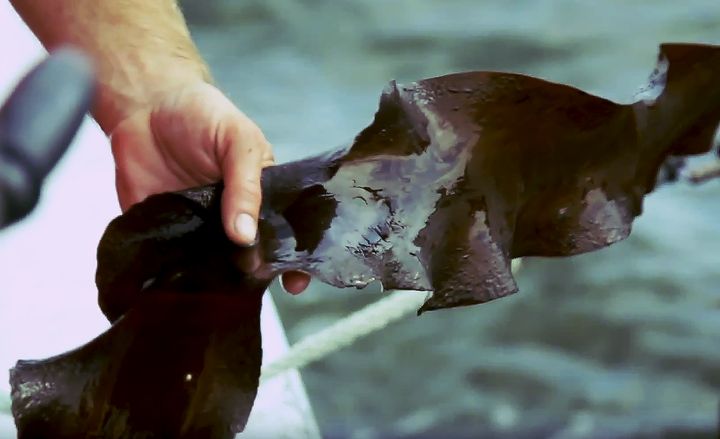
It’s challenging to convey the impact industrial fishing, farming, and shipping have had on our oceans. The health of the oceans and the impact of oceanic enterprise is particularly challenging for the average human to understand because with approximately 100,000 seafaring vessels in operation, less than 1 of 700 people have personal experience with deepwater operations. That is less than .15% of the world’s human population. Just consider this: the oceans cover 71 percent of the Earth's surface and contain 97 percent of the Earth's water. The amount of biodiversity and nutrient they contain makes them, essentially, the lifeblood of this planet.
Now, consider that our oceans, massive as they are, are being ravaged by a couple thousand vessels and less than 1 million individuals.
No wonder these issues have such a challenging time gaining traction with the average person. While less than 1 million of us are out there observing our oceans, all 7.5 billion of us are contributing to the depletion and disruption of the oceans. Guilt does nobody any good. If we're going to get real about our problematic relationship with the largest biome on earth, we need to talk solutions as well. Enter the work of Bren Smith: his 3D ocean farming project.
After spending the first part of his life in industrial fishing, Bren witnessed the collapse of cod populations. He wanted to spend his life on the ocean, but he knew that would be impossible if the industry maintained its unsustainable course. With the hope that harvesting oysters might be more sustainable, Bren collected shellfish on the Long Island sound for seven years. He wasn't very long into his trade when uncharacteristic hurricanes bombarded the Northeast. In his words:
“Then the storms hit. Hurricane Irene and Hurricane Sandy thrashed the East Coast. Two years in a row the storms buried 90 percent of my crops in three feet of mud, and 40 percent of my gear was washed away in a sea of death. At the same time, lobster were being driven northward by warming waters, and acidification was increasing faster than at any other time in 300 million years, killing billions of oyster seed up and down the American coast.”
“I found myself on the front lines of a climate crisis that had arrived 100 years earlier than expected...The same years my farm was wiped out by hurricanes, 83,000 people lost their jobs in New York City because of flooding... Unemployment claims doubled in Vermont along the storm’s path, and 80 percent of U.S. farmland was shriveled by drought, driving up food prices for middle and working class families. It turns out there will be no jobs on a dead planet.”
Like any good innovator, Bren was determined to adapt. He began to reimagine what being a fisherman means. He started investigating and experimenting with restorative species. After nearly three decades of fishing, he became a 3D ocean farmer.
At Thimble Island Ocean Farm, Bren grows a mixture of seaweeds and shellfish. These organisms are not only good food, but also fertilizer and fuel. (Vertical cultivation allows a production rate that is more than five times that of conventional agriculture.)
“My job has never been to save the seas; it’s to figure out how the seas can save us.” Bren’s farm is like a vertical underwater garden with hurricane-proof anchors. Kelp, Gracilaria, scallops, mussels, and more find a home in these gardens. Below the gardens, oysters and clams thrive on the seafloor.
These 3D farms add value in three critical ways:
- Creating sustainable new food, alternatives to resource-intensive food options.
- Transforming the role of "Fisherman" into one of restorative management of the ocean ecology.
- Building a “blue-green” economy -- eco-friendly businesses that adapt existing blue collar jobs and increase their value.
The impressive scope and innovation of this idea hasn't gone unnoticed, either. In 2015, Bren's nonprofit organization, GreenWave, was named the winner of the $100,000 Fuller Challenge, a global sustainability incentive competition, with his design of the world’s first multi-species 3D ocean farm model.
“GreenWave exemplifies beautifully Fuller’s inspirational call for individuals and groups to take the initiative, identify a critical issue, and tackle it independently, creatively, responsibly, and in a comprehensive manner,” said Michael Ben-Eli, former colleague of Buckminster Fuller, Senior Advisor to the Fuller Challenge, and Founder of The Sustainability Laboratory.
If this story resonates at all, you might check out Hexagon Geospatial’s IGNITE Challenge, inviting you to harness the power of multidimensional imaging (something that might prove useful in ocean farming) to make an app that will help change the world for the better.
This article was inspired by "The Seas Will Save Us" by Bren Smith








